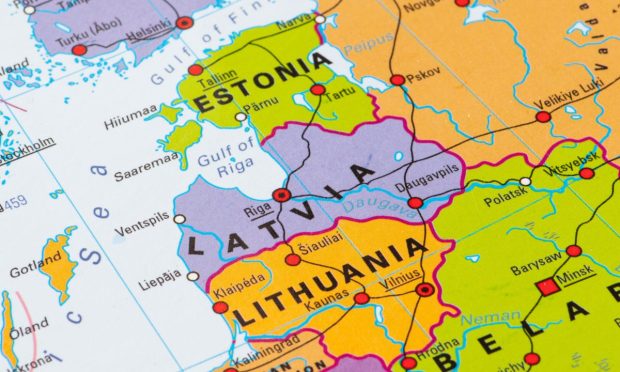Baltics Accelerate Real-Time Adoption Amid Faster Payment Headwinds in Europe

The Baltic region, with a population of over 6 million, has grown into a thriving FinTech hot spot in Europe and a regional frontrunner in digital payments adoption.
And when it comes to real-time payments, countries in the region were among the first to join the Single Euro Payments Area (SEPA) Instant Credit Transfer scheme, also known as SEPA Instant, when it launched 2017, driving consumer and merchant adoption of ultra-fast euro payments across the 36 countries within the SEPA region.
In the March edition of the “Real-Time Payments World Map,” a collaboration with The Clearing House, PYMNTS explores real-time payments across the region, noting how Europe, home to some of the most developed and widespread real-time payments schemes in the world, has seen historic instant payments growth in recent years.
In this piece, PYMNTS narrows that exploration to the Baltics, assessing how the progress Estonia, Latvia and Lithuania have made in accelerating digital payments in real time amid challenges inhibiting instant payment growth on the continent.
Estonia
Home to Europe’s small but thriving startup ecosystem, Estonia, with a population of less than 2 million, counts more than five unicorns per million per capita — the highest in Europe — including London Stock Exchange (LSE)-listed FinTech firm Wise (formerly TransferWise).
The country joined the EU’s SEPA Instant real-time payments platform in 2017. The implementation of the pan-European scheme is managed by Eesti Pank, the central bank of Estonia, in collaboration with local banks and the Estonian Banking Association.
As of June 2022, only 47% of Estonian banks and payment service providers (PSP) have adopted the SEPA Instant service, representing 12 institutions in the country, according to recent data from the European Payments Council (EPC).
Although that rate is much higher than the 5% recorded in Ireland or Denmark’s 4%, the fact that less than 50% of Estonian banks and PSPs offer SEPA Instant points to the significantly slow rollout of the instant payment scheme across the region, with real-time payments accounting for less than 14% of all SEPA credit transactions in Q3 2022.
Latvia
Like Estonia, Latvia also joined the SEPA Instant platform in 2017, and the system is currently offered by 17 banks and PSPs in the country.
“Customer payments are executed within a few seconds, and the money received can be reused immediately,” Latvia’s central bank said at the time, adding that under the scheme, non-cash transfers will be provided 24/7 year round, including on weekends and public holidays.
The number of SEPA Instant participants in the country stands at 53% as of June last year, including BlueOrange, SEB Banka, Signet Bank, RIB and Swedbank.
Lithuania
The Bank of Lithuania was the first euro-area central bank to open up its payments systems to non-bank financial services providers.
Wise then opened a euro account at the central bank in November 2018, which enabled it to gain direct access to the euro instant payment system.
The country was also one of the first to join the SEPA Instant platform when it launched in 2017, and has since seen the number of banks and PSPs offering the service grow to 100 this year, including banks connected to the central bank’s CENTROlink payment system.
But similar to other countries, the slow adoption problem remains, as the number of SEPA Instant participants in the country stands at 34%, even lower than Latvia and Estonia.
That might soon change though. In October of last year, the European Commission (EC) published a proposal aimed at forcing banks PSPs to offer 24/7 instant euro payment services without charging customers an additional fee, another impediment which has been said to undermine the success of the scheme.
For all PYMNTS EMEA coverage, subscribe to the daily EMEA Newsletter.

